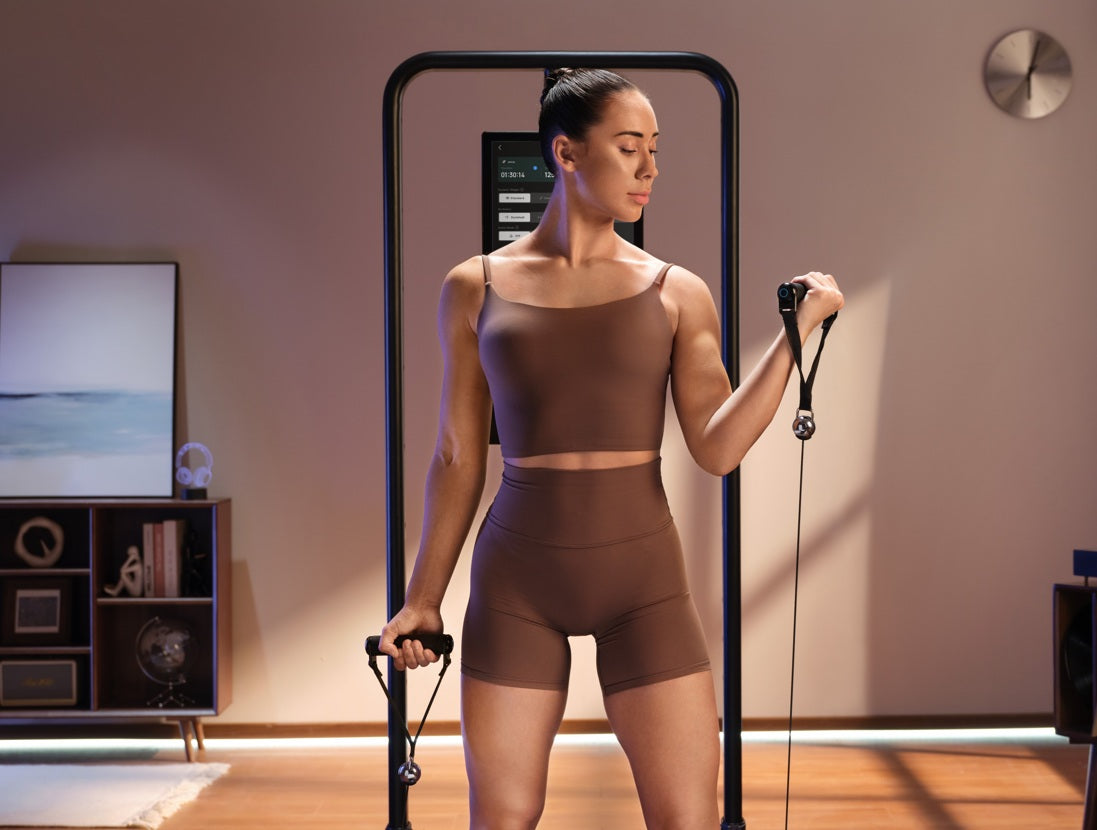

Understanding Unilateral Training and Its Benefits
Unilateral training refers to exercises that focus on one limb at a time, such as single-leg squats, one-arm rows, and lunges. Unlike bilateral movements (using both limbs simultaneously, like squats and bench presses), unilateral training challenges stability, coordination, and muscle activation, making it an essential component of strength development.
Why Unilateral Training Matters for Strength Development
Incorporating single-limb exercises into your workout routine can:
-
Addressing muscle Imbalances – Helps correct discrepancies between your left and right sides.
-
Improve Functional Strength – Enhances real-world movement patterns.
-
Increase Core Stability – Forces your core to work harder to maintain balance.
-
Boosts athletic Performance – Essential for sports requiring agility, power, and unilateral movement.
-
Reduce Injury Risk – Strengthens stabilising muscles and prevents compensation patterns.
-
Enhance Proprioception – Improves body awareness and neuromuscular control.
The Science Behind Unilateral Training and Strength Gains
1. Neuromuscular Adaptation
Unilateral exercises engage more stabiliser muscles, forcing the brain to improve coordination and balance. This leads to better movement efficiency and enhanced strength training outcomes.
2. Greater Range of Motion
Since one limb works independently, single-limb exercises often allow for a deeper range of motion, leading to better muscle activation and mobility gains.
3. Improved Strength Carryover to Bilateral Lifts
Strength gains in unilateral movements often translate to improved bilateral performance. A stronger single-leg squat, for example, can enhance overall squat strength.
4. Reduced Strength Discrepancy
Many people unknowingly rely on their dominant side, leading to imbalances. Training unilaterally ensures that both sides develop equally, contributing to balanced strength.
5. Injury Rehabilitation and Prehabilitation
Unilateral training is widely used in physical therapy to recover from injuries, particularly those affecting one side of the body. It is also effective for injury prevention, as it strengthens muscles and joints independently.
Best Unilateral Exercises for Strength Development
Lower Body Unilateral Exercises
1. Bulgarian Split Squats
-
Why: It builds leg strength, balance, and coordination.
-
How to Perform: Place one foot on a bench behind you and squat down with the front leg.
2. Single-Leg Romanian Deadlifts
-
Why: Targets hamstrings and glutes while improving stability.
-
How to Perform: Hinge at the hips while extending one leg behind you.
3. Step-Ups
-
Why: To develop explosive power and single-leg endurance.
-
How to Perform: Step onto a box or bench, driving through your front foot.
4. Pistol Squats
-
Why: Improves unilateral leg strength and mobility.
-
How to Perform: Lower yourself on one leg while keeping the other extended forward.
Upper Body Unilateral Exercises
1. Single-Arm Dumbbell Bench Press
-
Why: Challenges shoulder and core stability while building chest strength.
-
How to Perform: Perform a standard dumbbell press with one arm while stabilising your torso.
2. One-Arm Rows
-
Why: Strengthens back muscles and prevents muscle imbalances.
-
How to Perform: Pull a dumbbell towards your torso while keeping your back straight.
3. Landmine Press
-
Why: To develop unilateral shoulder strength and control.
-
How to Perform: Press a barbell anchored to the ground with one hand.
4. Single-Arm Overhead Press
-
Why: Improves shoulder stability and core control.
-
How to Perform: Press a dumbbell overhead while keeping your core engaged.
Core-Specific Unilateral Training
-
Pallof Press – Strengthens anti-rotation stability and improves spinal control.
-
Single-Arm Farmers Carry – Enhances core endurance and grip strength.
-
Single-Leg V-Ups – Targets obliques and rectus abdominis for unilateral core control.
How to Incorporate Unilateral Training Into Your Routine
1. Use Unilateral Exercises as Warm-Ups
Perform light unilateral movements before heavy lifts to activate stabilising muscles.
2. Replace Bilateral Exercises with Unilateral Variations
Swap traditional movements for single-limb alternatives, like replacing barbell squats with Bulgarian split squats.
3. Add Unilateral Training to Improve Weaknesses
If one side lags behind, add extra volume and intensity to that limb using unilateral work.
4. Train Unilaterally Twice Per Week
For best results, dedicate 1-2 days per week to focusing on single-limb exercises.
Unilateral Training for Injury Prevention
Unilateral strength training is highly effective for reducing injury risk because it:
-
Enhances joint stability and control.
-
Strengthens smaller stabilising muscles, preventing compensations.
-
Improves mobility and movement efficiency, reducing strain on joints.
How Speediance Equipment Enhances Unilateral Training
Speediance Smart Gym provides real-time feedback, resistance control, and guided workouts, making unilateral training more effective.
Recommended Speediance Equipment for Unilateral Training
-
Speediance Smart Gym – Features customised resistance training for single-limb exercises.
-
Speediance PowerGrip – Enhances grip strength and unilateral control.
-
Adjustable Bench – Provides stability for unilateral upper body movements.
-
Rowing Bench – Improves core engagement and balance during single-limb exercises.
Final Thoughts: The Power of Unilateral Training in Strength Development
Unilateral training is an essential component of strength development, promoting balanced strength, improved mobility, and better injury prevention. By integrating single-limb exercises into your training routine, you can build functional strength that translates to better bilateral lifting and athletic performance.
Ready to incorporate unilateral training into your workouts? Book a demo today to experience how Speediance Smart Gym can optimise your training routine.
For expert guidance on strength development and unilateral training, feel free to contact us!

